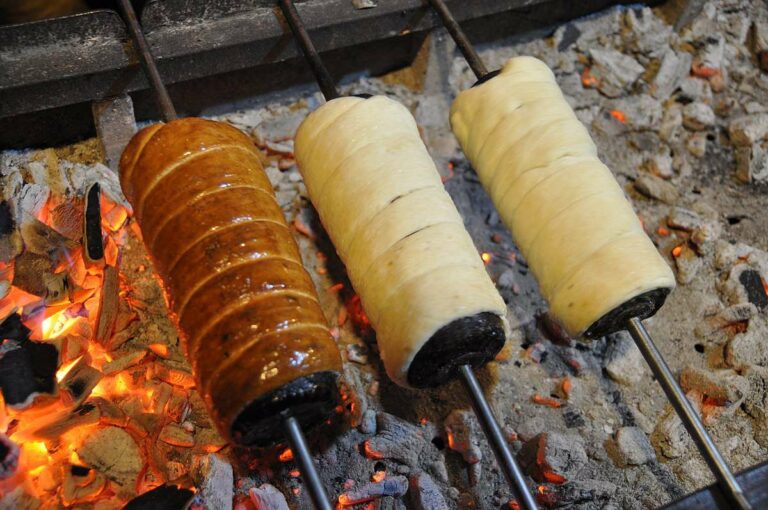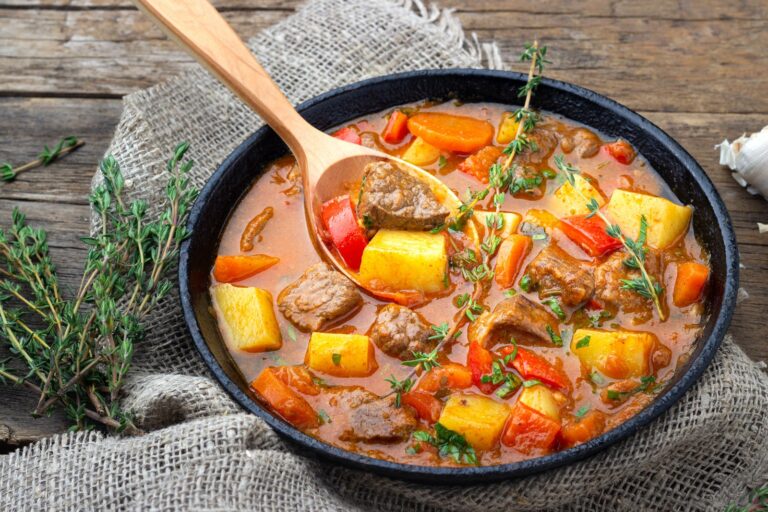Introduction to Hungarian Cuisine
Hungarian cuisine is a unique blend of flavors and techniques that have been influenced by various cultures throughout history. From Turkish spices to German sausages, Hungarian cuisine has incorporated a variety of ingredients and cooking styles to create its own distinct culinary identity.
Hungarian cuisine is known for its hearty and flavorful dishes, often featuring meat, potatoes, and paprika. However, there are also vegetarian and lighter options, such as soups and salads. The cuisine is also characterized by its use of spices and herbs, which add depth and complexity to the dishes.
The Historical Background of Hungarian Cuisine
Hungarian cuisine has a rich and diverse history that has been shaped by various influences. The Magyar tribes, who settled in Hungary in the 9th century, brought with them a nomadic lifestyle and a preference for meat-based dishes. During the Ottoman Empire’s rule in the 16th and 17th centuries, the Turks introduced spices and cooking techniques that are still used today, such as the use of paprika. Later, as part of the Austro-Hungarian empire, German and Austrian influences brought a variety of meats and sausages to Hungarian cuisine.
During the 20th century, Hungary underwent several changes, including periods of Soviet influence, which led to a more standardized and simplified cuisine. However, in recent years, there has been a revival of traditional Hungarian cuisine, with an emphasis on using locally sourced ingredients and traditional cooking methods.
The Influence of Eastern European Countries on Hungarian Cuisine
Hungarian cuisine has been influenced by a variety of Eastern European countries, including Poland, Slovakia, Romania, and Ukraine. These countries share a similar history and culture with Hungary, and their cuisines have contributed to the development of Hungarian cuisine.
One example of this influence is in the use of dumplings and noodles in Hungarian dishes, which can be traced back to the Germanic and Slavic cultures. Another example is the use of sour cream, which is a staple in Hungarian cuisine and is also commonly used in neighboring countries.
The Role of Spices and Herbs in Hungarian Cuisine
Spices and herbs play a significant role in Hungarian cuisine, adding flavor and complexity to dishes. The most commonly used spice is paprika, which is made from ground dried red peppers. Paprika is used in a variety of Hungarian dishes, including goulash and chicken paprikash. Other common spices and herbs used in Hungarian cuisine include caraway seeds, garlic, and dill.
These spices and herbs not only enhance the flavor of the dishes but also have health benefits. For example, caraway seeds are known for aiding digestion, while garlic has anti-inflammatory properties.
The Traditional Dishes with Eastern European Roots
There are several traditional Hungarian dishes that have Eastern European roots. One example is paprikash, which is a stew made with chicken or beef, paprika, and sour cream. Another example is székelykáposzta, which is a cabbage stew that originated in Transylvania, which is now part of Romania.
These dishes have been adapted over time to incorporate Hungarian ingredients and techniques, but their roots in neighboring Eastern European countries are still evident.
Conclusion: The Eastern European Influences on Hungarian Cuisine
Hungarian cuisine is a reflection of its diverse history and cultural influences. The cuisine has been shaped by the Magyar tribes, Ottoman Turks, German and Austrian influences, and neighboring Eastern European countries. These influences have contributed to the unique blend of flavors and techniques that define Hungarian cuisine today. From paprika to dumplings, Hungarian cuisine continues to be an exciting and flavorful culinary experience.



